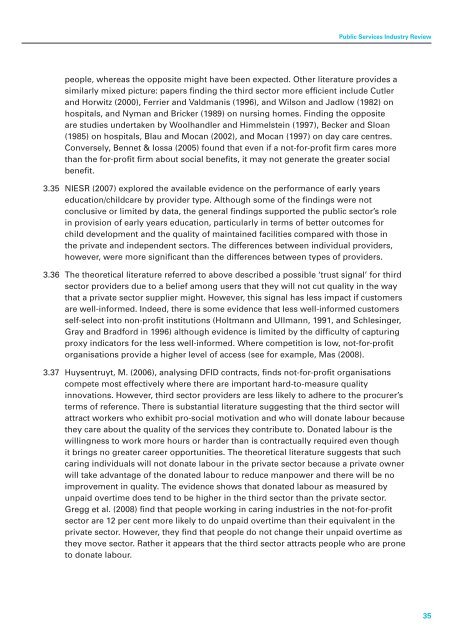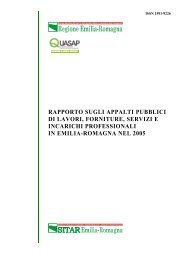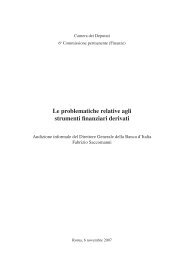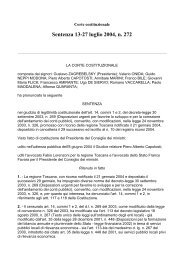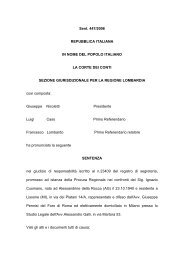Understanding the Public Services Industy
Understanding the Public Services Industy
Understanding the Public Services Industy
You also want an ePaper? Increase the reach of your titles
YUMPU automatically turns print PDFs into web optimized ePapers that Google loves.
<strong>Public</strong> <strong>Services</strong> Industry Review<br />
people, whereas <strong>the</strong> opposite might have been expected. O<strong>the</strong>r literature provides a<br />
similarly mixed picture: papers finding <strong>the</strong> third sector more efficient include Cutler<br />
and Horwitz (2000), Ferrier and Valdmanis (1996), and Wilson and Jadlow (1982) on<br />
hospitals, and Nyman and Bricker (1989) on nursing homes. Finding <strong>the</strong> opposite<br />
are studies undertaken by Woolhandler and Himmelstein (1997), Becker and Sloan<br />
(1985) on hospitals, Blau and Mocan (2002), and Mocan (1997) on day care centres.<br />
Conversely, Bennet & Iossa (2005) found that even if a not-for-profit firm cares more<br />
than <strong>the</strong> for-profit firm about social benefits, it may not generate <strong>the</strong> greater social<br />
benefit.<br />
3.35 NIESR (2007) explored <strong>the</strong> available evidence on <strong>the</strong> performance of early years<br />
education/childcare by provider type. Although some of <strong>the</strong> findings were not<br />
conclusive or limited by data, <strong>the</strong> general findings supported <strong>the</strong> public sector’s role<br />
in provision of early years education, particularly in terms of better outcomes for<br />
child development and <strong>the</strong> quality of maintained facilities compared with those in<br />
<strong>the</strong> private and independent sectors. The differences between individual providers,<br />
however, were more significant than <strong>the</strong> differences between types of providers.<br />
3.36 The <strong>the</strong>oretical literature referred to above described a possible ‘trust signal’ for third<br />
sector providers due to a belief among users that <strong>the</strong>y will not cut quality in <strong>the</strong> way<br />
that a private sector supplier might. However, this signal has less impact if customers<br />
are well-informed. Indeed, <strong>the</strong>re is some evidence that less well-informed customers<br />
self-select into non-profit institutions (Holtmann and Ullmann, 1991, and Schlesinger,<br />
Gray and Bradford in 1996) although evidence is limited by <strong>the</strong> difficulty of capturing<br />
proxy indicators for <strong>the</strong> less well-informed. Where competition is low, not-for-profit<br />
organisations provide a higher level of access (see for example, Mas (2008).<br />
3.37 Huysentruyt, M. (2006), analysing DFID contracts, finds not-for-profit organisations<br />
compete most effectively where <strong>the</strong>re are important hard-to-measure quality<br />
innovations. However, third sector providers are less likely to adhere to <strong>the</strong> procurer’s<br />
terms of reference. There is substantial literature suggesting that <strong>the</strong> third sector will<br />
attract workers who exhibit pro-social motivation and who will donate labour because<br />
<strong>the</strong>y care about <strong>the</strong> quality of <strong>the</strong> services <strong>the</strong>y contribute to. Donated labour is <strong>the</strong><br />
willingness to work more hours or harder than is contractually required even though<br />
it brings no greater career opportunities. The <strong>the</strong>oretical literature suggests that such<br />
caring individuals will not donate labour in <strong>the</strong> private sector because a private owner<br />
will take advantage of <strong>the</strong> donated labour to reduce manpower and <strong>the</strong>re will be no<br />
improvement in quality. The evidence shows that donated labour as measured by<br />
unpaid overtime does tend to be higher in <strong>the</strong> third sector than <strong>the</strong> private sector.<br />
Gregg et al. (2008) find that people working in caring industries in <strong>the</strong> not-for-profit<br />
sector are 12 per cent more likely to do unpaid overtime than <strong>the</strong>ir equivalent in <strong>the</strong><br />
private sector. However, <strong>the</strong>y find that people do not change <strong>the</strong>ir unpaid overtime as<br />
<strong>the</strong>y move sector. Ra<strong>the</strong>r it appears that <strong>the</strong> third sector attracts people who are prone<br />
to donate labour.<br />
35


